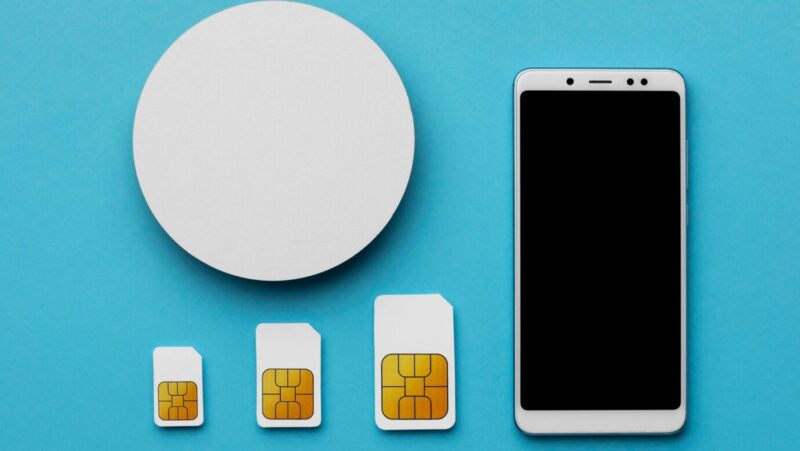
IoT SIM cards are playing a key role in making agriculture smarter, more efficient, and more sustainable. From irrigation systems to livestock monitoring, the possibilities for IoT in farming are endless. The future of agriculture is bright, and IoT SIM cards will be at the heart of that change.
Understanding Smart Agriculture and IoT
Smart agriculture uses technology to make farming easier and more productive. It relies on tools like sensors, software, and automated systems to keep track of soil quality, water use, and crop growth. The aim is simple: to save resources, reduce effort, and grow healthier crops.
IoT connects devices so they can “talk” to each other and share information. In farming, this could mean soil sensors measuring moisture levels, weather stations predicting rainfall, or machines checking crop health. All this information helps farmers make better choices, like when to water fields or harvest crops. By working smarter, farmers can reduce waste, grow more food, and get better results without guessing.
Why IoT SIM Cards Are Essential for Smart Agriculture
For IoT devices to work, they need a way to communicate with each other, and this is where IoT SIM cards come in. These special SIM cards are used in devices that need to connect to mobile networks. They allow sensors and machines on farms to send data to each other and to the farmer, even if the farm is in a remote area with no traditional internet connection.
IoT SIM cards are built to work in places where regular SIM cards might not be reliable. They can handle small amounts of data over long distances and work across different mobile networks. This makes them perfect for farms located in areas where internet service isn’t always available. With these SIM cards, farmers can get real-time updates about their crops and equipment from just about anywhere.
Applications of IoT SIM Cards in Smart Agriculture
IoT SIM cards are used in many different ways to improve farming.
Monitoring Soil and Weather Conditions
One of the main uses of IoT SIM cards for agriculture is monitoring soil and weather. Farmers can place sensors in the soil to measure moisture, temperature, and other important factors. These sensors send the data to a central system using IoT SIM cards. With this information, farmers can adjust their irrigation systems or plan their work according to the weather, making sure their crops get what they need to grow.
Smart Irrigation Systems
Water is one of the most important resources in farming. But too much or too little water can hurt crops. IoT SIM cards help create smart irrigation systems that monitor soil moisture levels.

These systems can automatically turn on or off water sprinklers when needed. Farmers don’t need to be around to adjust the water levels, which saves them time and prevents water waste. It’s a more efficient way to take care of crops while protecting the environment.
Automated Farm Equipment
IoT SIM cards are making farming machines like tractors, harvesters, and planters smarter. With these cards, farmers can control their machines from a distance or let them work on their own. This reduces the need for hands-on labor and makes farming more efficient. The best part is that these machines can send updates directly to the farmer, letting them know how things are going. This saves time, cuts down on waste, and helps farmers stay on top of their work.
Livestock Health Tracking
IoT SIM cards give farmers a simple way to keep an eye on their animals’ health. Small devices, like collars or tags, track things like temperature, eating habits, and how much the animals move.

If something seems off—like an animal isn’t eating or moving as much—the system sends an alert right away. Farmers can get these updates no matter where they are, so they can step in quickly and keep their animals healthy.
Crop Monitoring and Protection
IoT SIM cards make it easier for farmers to monitor their crops. By using drones and sensors, farmers can keep an eye on their fields for any signs of trouble, like pests or diseases. Farmers are always aware of what is happening thanks to these technologies, which gather data and deliver it directly to them.
Case Studies: IoT SIM Cards in Action
In California, farmers use IoT SIM cards in smart irrigation systems to save water. Sensors in the soil send real-time information about moisture levels, so farmers can adjust their watering schedules. This helps conserve millions of gallons of water while keeping crops healthy.
In Australia, large livestock farms use IoT SIM cards to monitor animal health. Each animal wears a sensor that tracks its movement, temperature, and activity. If something seems off, the farmer gets an immediate alert, allowing for quick action and better care.
In India, IoT SIM cards are used in precision farming. Sensors check soil conditions, helping farmers decide the best time for planting, irrigation, and harvesting. This increases crop yields and reduces waste.
The following examples demonstrate how IoT SIM cards are transforming farming. They make it more sustainable and effective.

